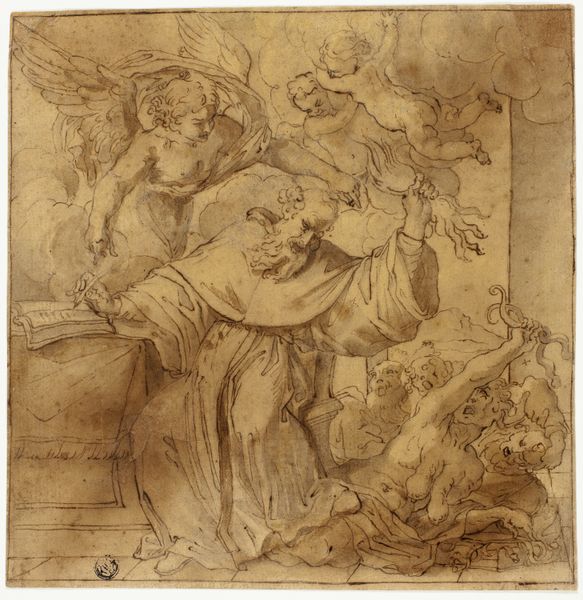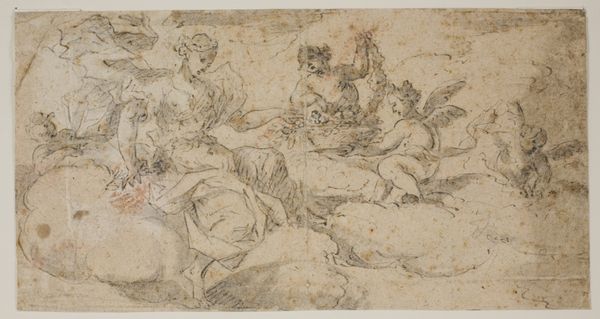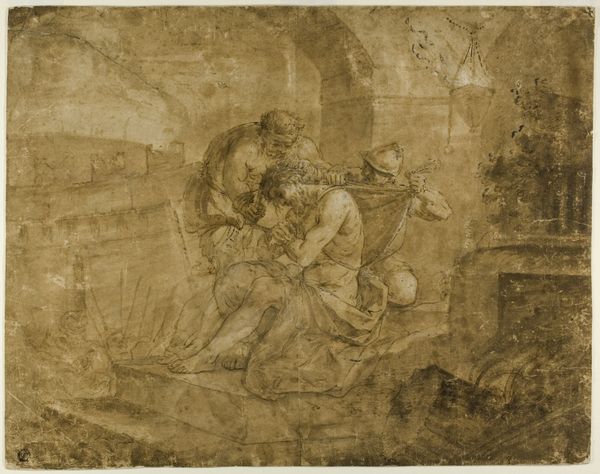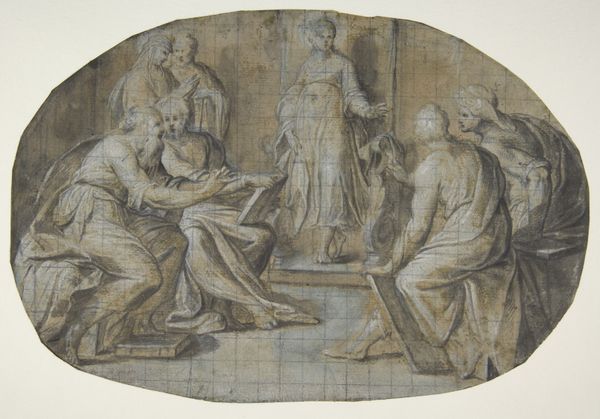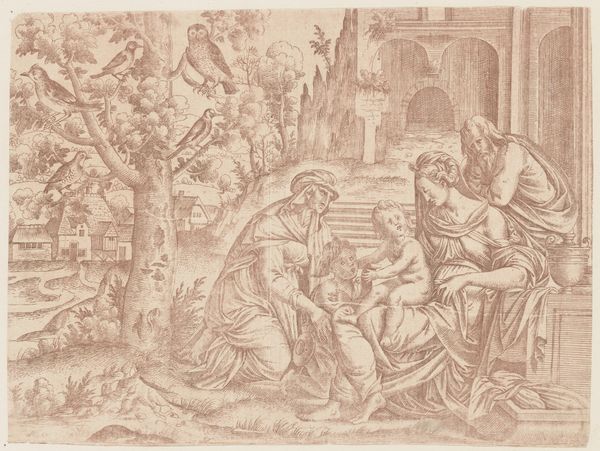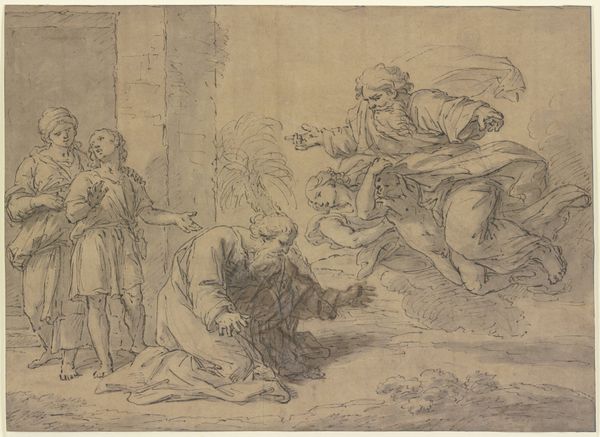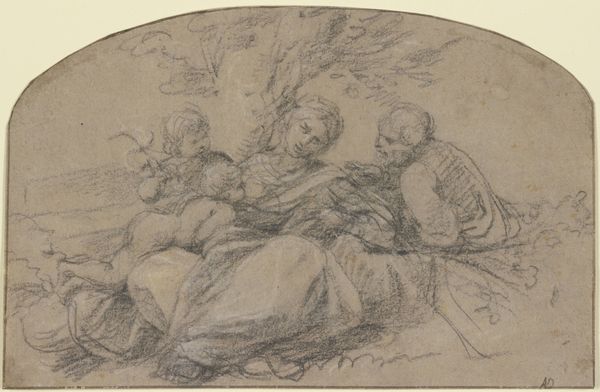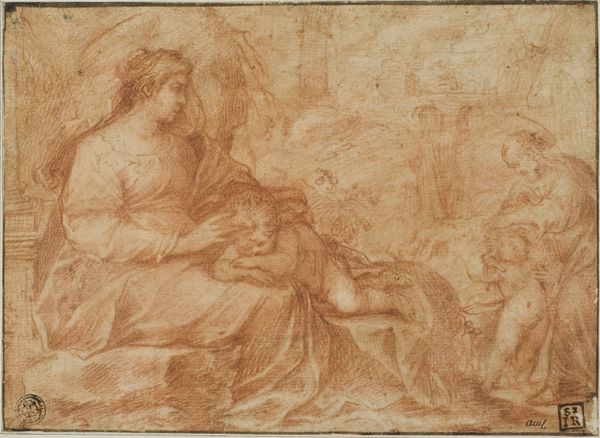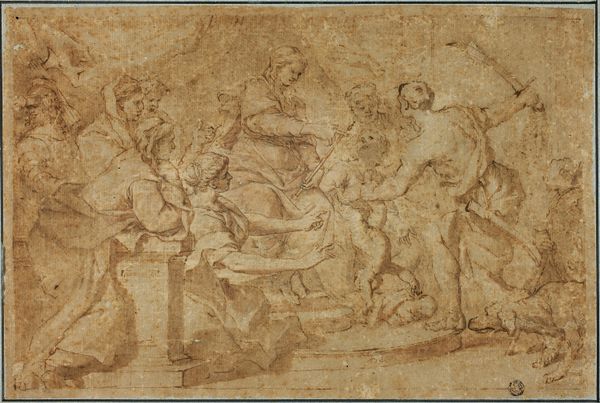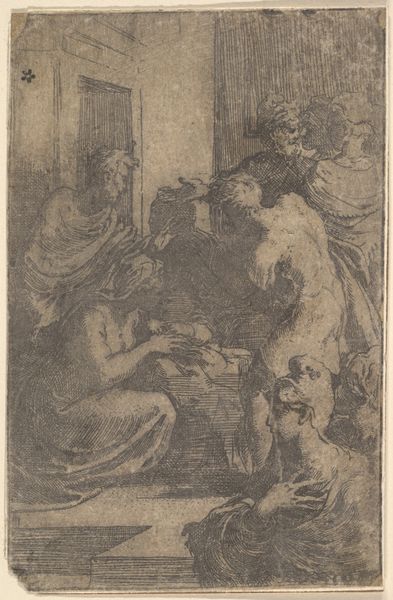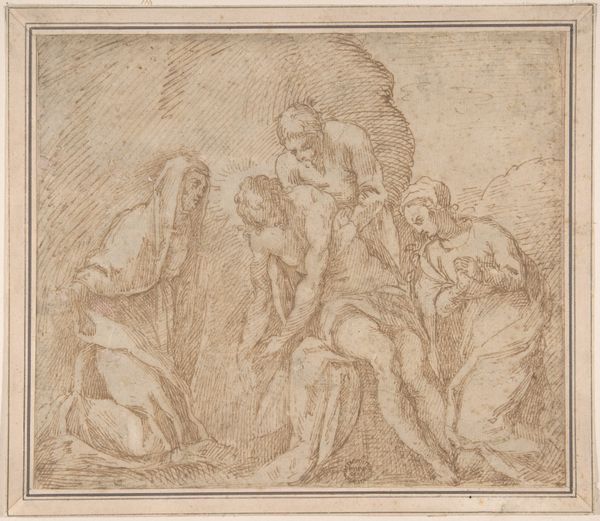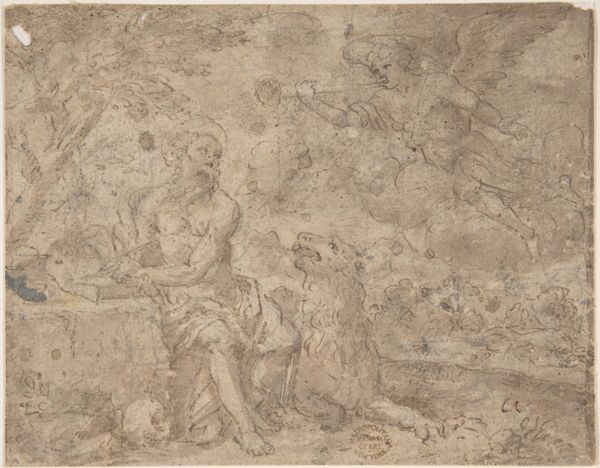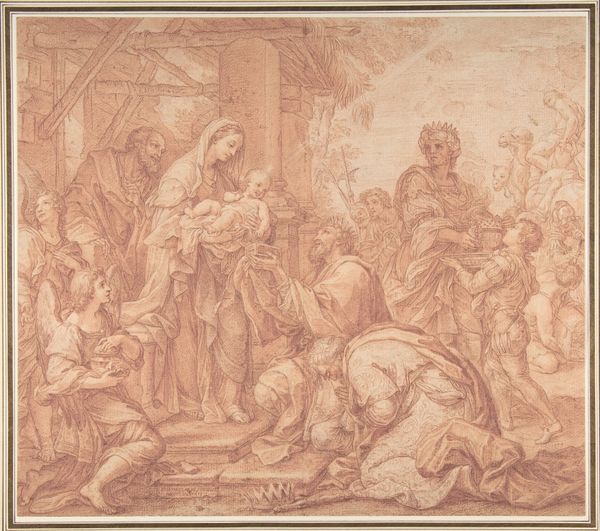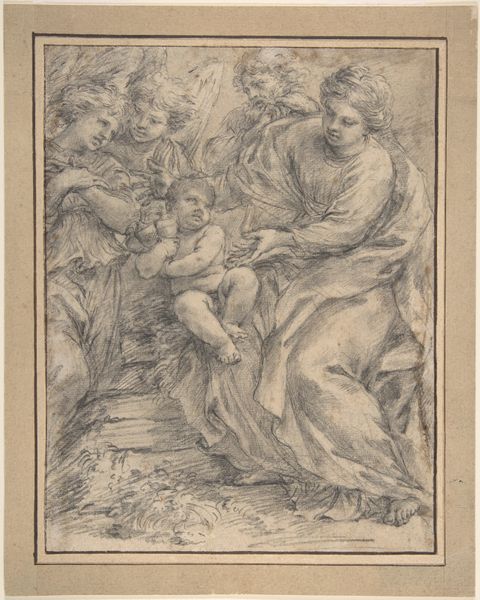
Two Reclining Beggars, and Seated Mother and Child, at Foot of Steps n.d.
0:00
0:00
drawing, print, paper, ink, graphite
#
portrait
#
drawing
# print
#
charcoal drawing
#
figuration
#
paper
#
11_renaissance
#
ink
#
graphite
#
genre-painting
#
history-painting
Dimensions: 263 × 394 mm
Copyright: Public Domain
Curator: Looking at this, my first thought is, "Oof, talk about a mood." It’s heavy, melancholic, a touch tragic. All that swirling brown ink. Editor: Indeed. What we’re seeing here is a drawing attributed to Girolamo Macchietti. It's called "Two Reclining Beggars, and Seated Mother and Child, at Foot of Steps," currently held by The Art Institute of Chicago. Curator: Right, "melancholic" feels like the perfect word, and it is a little claustrophobic. You have this almost pyramid composition, starting with those beggars at the base and ending with, what looks like... a blurry backdrop. You get a sense of confinement, both physical and maybe even societal. Editor: The work definitely places figures from different social strata side-by-side. The beggars seem resigned, almost defeated, while the mother and child appear elevated, both literally and figuratively. The "steps" become a potent symbol here. Curator: Absolutely! And look at the lines of those beggars, all scratchy and broken up, whereas the mother and child have such full, curved lines—it gives them substance. This drawing technique, contrasting the social figures, seems purposeful to give off distinct characteristics. Editor: And consider the public and the patrons for pieces like this. Macchietti was working during a period of significant social upheaval, as economic disparities became increasingly pronounced. Images of poverty circulated widely in Renaissance society as prints and drawings—so this drawing speaks to both the aesthetics and political undercurrents. Curator: It's easy to forget, surrounded by beautiful paintings, that artists also spent time sketching subjects like these, observing the fringes. It makes you think, doesn't it, about the stories untold? Editor: It really does. We, as observers and scholars, try to piece those untold histories through artwork. These images weren’t always made to valorize; they could equally act as social critiques. Curator: Right? Macchietti is clearly more interested in the contrasts than making judgments, right? The mood, in any case, just knocks me flat. Editor: Yes. It prompts questions, even centuries later. And, art’s capability to do that remains profound.
Comments
No comments
Be the first to comment and join the conversation on the ultimate creative platform.
